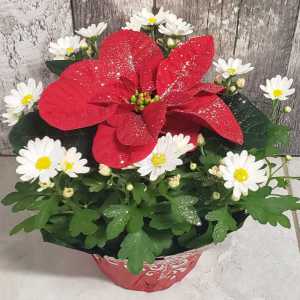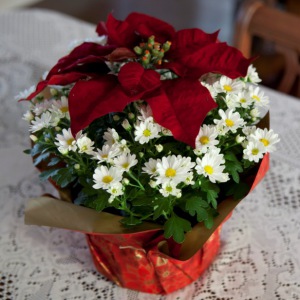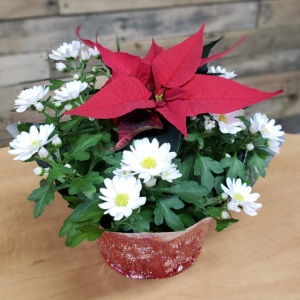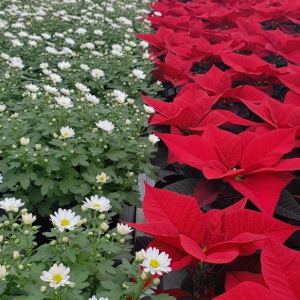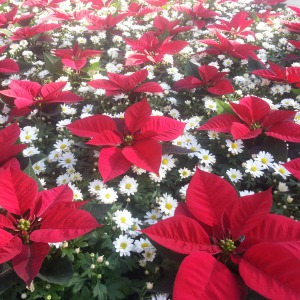Fleursettia
Willy’s Fleursettias feature stunning Poinsettia blooms alongside delicate white Fleurette flowers. Elevate your holiday decor with its vibrant colours. On this page, you’ll find detailed care tips, FAQs and other information.

Our Fleursettias are known for their beautiful Poinsettia blooms that contrast the delicate white Fleurette flowers.
Fleursettia’s are a hybrid cultivar of the poinsettia plant, which is native to Mexico and Central America. It’s a popular choice for holiday decorations and is prized for its vibrant colours and luxurious appearance.
-
Watering
Water your Fleursettia plant when the top inch of soil feels dry to the touch.
Water the plant deeply until water starts to drain from the bottom of the pot, but make sure not to overwater or allow the plant to sit in standing water.
-
Plant Light
Fleursettias prefer bright, indirect sunlight for at least 6 hours a day.
Place the plant near a south or west-facing window that gets plenty of sunlight.
If you notice the leaves start to turn yellow or brown, it may be an indication that the plant is getting too much direct sunlight.
-
Temperature
Fleursettias prefer temperatures between 60-70°F (15-21°C) during the day and slightly cooler temperatures between 50-60°F (10-15°C) at night.
In hot climates, provide some shade during the hottest part of the day to prevent overheating.
Available Colours/Varieties
-
 Red & White
Red & White
Is the Fleursettia plant toxic to pets?
Yes, like other poinsettia varieties, the Fleursettia plant is toxic to pets if ingested. Keep the plant out of reach of curious pets and children.
Can I replant my Fleursettia plant outdoors?
Yes, you can replant your Fleursettia plant outdoors in a sunny, well-draining location once the danger of frost has passed. Gradually acclimate the plant to outdoor conditions by placing it outside for a few hours each day and gradually increasing the time.
How do I prune my Fleursettia plant?
To prune your Fleursettia plant, pinch off the spent blooms at the base of the flower stem to encourage the plant to produce more blooms. You can also trim back any leggy stems to promote bushier growth.
